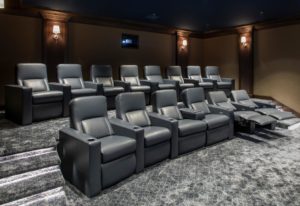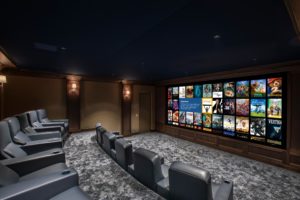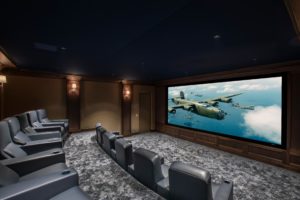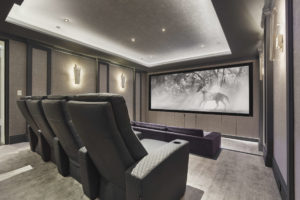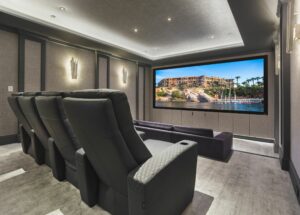Art Connoisseurship in a Digital World
Collecting art has long been a passion for those who wish to own and display a piece of work that captures emotional and intellectual connections. Perhaps the work or artist evokes strong positive memories, or they feel the piece speaks to the design, mood and aesthetic of their home.
The art world is continuously evolving as artists react to the world around them. More than ever, artists are looking to technology for inspiration and as a digital canvas for their creativity. While there is no universally accepted definition for New Media Art, a good baseline is any work created with or incorporating new media technologies such as digital art, computer graphics and animation, artificial intelligence, virtual and interactive art and even art as biotechnology. Digital and new media art is not new of course, but over the past years has steadily grown in prominence across the art world as more artists are creating digital pieces and both museums and private collectors are increasingly incorporating digital and new media art into their collections.
In 2021, we saw this accelerate with the emergence of nonfungible tokens (NFTs) driving explosive growth in investments in digital art and collectibles by art collectors and cryptocurrency investors. Part of that was related to general interest (or some would say hype) in cryptocurrency and anything blockchain. Where art is concerned, however, the real importance of NFTs is that they can provide a way to authenticate ownership of digital works of art on the blockchain. Authenticity and ownership have always been critical elements in the art world and were an important issue or challenge where collecting digital art was concerned before anyone had even heard of NFTs.
Art Connoisseurship and an appreciation of how art is displayed and experienced have been part of the DNA of the art world since time immemorial. Think only of Monet’s Waterlilies that were installed in two specially designed oval-shaped rooms in the Orangerie in Paris in 1927, with a recent renovation completed to restore Monet’s original vision after earlier alterations in the 1960s.
When it comes to digital and new media art this creates some unique challenges and opportunities. And, is acutely relevant with art collectors now increasingly seeking new and engaging ways to display their digital art collections, in a way that complements the overall aesthetic of their physical spaces, integrating architecture and design. Ultimately, private art collections are an extension of their owners, an expression of their personality. Architects, designers and technology providers must work together to ensure that digital art collections can be experienced in as engaging a way as possible.
Paradoxically, however, there has been a tendency to display digital art forms on flat-panel screens in 16:9 aspect ratio, which creates important issues. Our brains have been wired to associate this aspect ratio with TVs or computer monitors, which then becomes the context of the work displayed. Few serious art collectors and connoisseurs would be willing to invest in a high-end digital work of art for the result to then be mistaken for a screensaver. From the artist’s perspective, this is even more critical. Any artist wouldn’t want their art displayed on a canvas that degrades the intended quality and impact—not to mention the limitations placed on their artistic freedom.
This is where we need to think in terms of architectural digital canvases that enable artists to realize their artistic visions without placing limitations on them in terms of scale (screen or canvas size) or shape (aspect ratio). From the perspective of the art collectors or connoisseurs, these digital canvases can be created to custom specifications to be integrated with the architecture and design of the home, all in service of the artist’s desire to realize their artistic vision, and the art connoisseur’s passion to experience it in the most engaging environment. The technology used to create the digital canvas must enable that objective. This requires display technology of the highest possible quality, considering the unique properties of each technology. Laser projection is a state-of-the-art choice that can deliver astounding results. Direct View LED also offers unique capabilities, where resolution can translate into texture for example, and where technology also becomes an artistic medium.
The art canvas is not the only aspect. In the traditional art world, it has been a trend for artists and galleries to work with developers and designers to create ‘live-in’ art galleries for private homes. Where digital art collections are concerned, this is where art connoisseurship and cinema connoisseurship can come together. Creating a private art gallery to enjoy a digital art collection has much in common with creating an immersive environment to enjoy spectacular cinematography and film.
A perfectly engineered Private Theater shares many of the critical attributes of an engaging private gallery to experience a digital art collection. Reference private theatres have masking screens, which can not only perfectly frame the different aspect ratios of each film but can also be engineered to perfectly frame each work of art to its unique scale and shape. Lighting control is another key element, as is seating to comfortably enjoy your collection and share it with loved ones. Many digital artworks also have a sound dimension, where a private theater can faithfully reproduce the artist’s vision and deliver a unique level of immersion.
When working with a private cinema design partner, all of this can be taken into account from the onset, creating a space that enables a seamless transition from an immersive private cinema to an engaging private art gallery. The experience extends beyond the art itself to encompass the surrounding architecture.
Let’s not forget cinema is the seventh art… The art of creating a luxury private cinema is where cinema connoisseurship and art connoisseurship can truly come together, with both artforms finding a home where the artist’s vision can be experienced without compromise and where cinema connoisseurs can experience their own renaissance…
